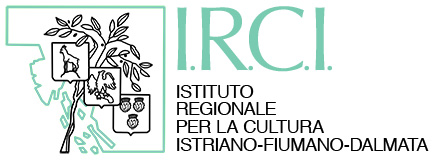AMSTICI BARTOLI SPIKIC
Dalla matita, ai pennarelli, all’acrilico, all’aerografo, al computer. Da mezzo secolo è questo il percorso operativo quasi obbligato che gli illustratori dei messaggi pubblicitari hanno affrontato, inchinandosi infine al dominio assoluto del digitale. La creatività ne è stata francamente mortificata. Anche per questo pare giusto e opportuno recuperare l'opera di tre grandi illustratori "cartacei" che già si meritarono una mostra a Trieste, nel 1983: Giampaolo Amstici, triestino, Giuliano Bartoli, nativo d'Isola d'lstria, Tomislav Spikic, nato a Zagabria da madre triestina. Illustratori al servizio di famose agenzie pubblicitarie e di famosi marchi da reclamizzare, illustratori diversi ma diversamente inconfondibili, ancora estranei all’invasione della computergrafica ovvero suoi utilizzatori (è il caso di Bartoli e della sua partner Patrizia Elli) solo come soluzione tecnica conclusiva di una creazione "pittorica".
E appunto pittori puri si sono segretamente sentiti, sempre, questi Tre Moschettieri, qui riuniti a quarant’anni dalla loro prima esibizione triestina. Oggi Spikic, uscito dal mondo profondamente mutato della pubblicità, dipinge per proprio diletto: singolari, suggestivi ritratti e scene di gruppo. Amstici, prematuramente mancato nel 2014, ha lasciato ai suoi estimatori l'affascinante serie delle Nuvole. Bartoli, con EIIi, inventa simpatiche variazioni sul curioso tema delle Balene.
Ma le loro performance in ambito strettamente pubblicitario, che ebbero il proprio clou negli anni Ottanta e Novanta del secolo scorso, rimangono a testimonianza di quanta libera e felice inventiva potesse scaturire dalle maglie strette imposte dalle agenzie e dai clienti, e dalle necessità del marketing. "Rivali" ma colleghi e amici, Amstici, Bartoli-Elli e Spikic hanno attinto spesso a fonti ispirative comuni: la grafica "made in Usa" di un Norman Rockwell (caro soprattutto ad Amstici), la fantasy (fonte ispirativa per tutti e tre), un pizzico di surrealismo non privo di humour, una spruzzata di candida naïveté (Spikic soprattutto).
È lecito (e auspicabile) ritenere che, in tempi tanto mutati e con tecnologie tanto avanzate, la loro lezione possa essere ancora oggi valida per i molti giovani talenti cha al mondo dell’illustrazione si accostano, spesso affidandosi, più che alle matite o all’aerografo, ai tasti di strumenti sempre più evoluti, ma pure tirannici. Disegnare e dipingere necesse est, e viene prima di tutto. Digitare eventualmente dopo.
La mostra è aperta tutti i giorni dal 15 luglio al 3 settembre dalle ore 10.00 - 12.30 e dalle 16.30 - 19.30 (la domenica chiude alle ore 19.00).
Advertising in the sign of three great illustrators
Amstici Bartoli Spikic
From pencils to felt-tip pens, brushes, acrylic, airbrush and computer. For half a century, this has been the almost mandatory design path that advertising illustrators have taken, finally bowing to the absolute dominance of digital. Creativity has been frankly mortified. This is also why it seems right and proper to recover the work of three great ‘paper’ illustrators who already deserved an exhibition in Trieste in 1983: Giampaolo Amstici, from Trieste, Giuliano Bartoli, a native of Isola d’Istria, and Tomislav Spikic, born in Zagreb of a Triestine mother.
Illustrators at the service of famous advertising agencies and famous brands to advertise; illustrators who are different but differently unmistakable, still strangers to the invasion of computer graphics or who use it ( this is the case of Bartoli and his partner Patrizia Elli) only as a final technical solution to a ‘pictoral’ creation.
And indeed, pure painters have always secretly felt themselves to be the Three Musketeers, reunited here forty years after their first exhibition in Trieste. Today, Spikic, who has emerged from the profoundly changed world of advertising, paints for his own pleasure: singular, evocative portraits and group scenes. Amstici, who died prematurely in 2014, left his admirers the fascinating Clouds series. Bartoli, with Elli, invents nice variations on the curious theme of whales.
But their performances in the strictly advertising sphere, which had their climax in the 1980s and 1990s, bear witness to how much free and happy inventiveness could spring from the tight constraints imposed by agencies and clients, and the needs of marketing. ‘Rivals’ but colleagues and friends, Amstici, Bartoli-Elli and Spikic often drew on common inspirational sources: the ‘made in USA’ graphics of a Norman Rockwell (dear above all to Amstici), fantasy (inspirational source for all three), a pinch of surrealism not devoid of humor, a touch of candid naïveté (Spikic above all).
It is legitimate (and desirable) to believe that, in such changed times and with such advanced technologies, their lesson may still be valid today for the many young talents who are approaching the world of illustration, often relying on the keys of increasingly evolved but also tyrannical instruments rather than on pencils or airbrushes. Drawing and painting necesse est, and comes first. Typing may come later.
The exhibition is open every day from 15 July to 3 September from 10.00 - 12.30 and from 16.30 - 19.30 (Sunday closes at 19.00).


